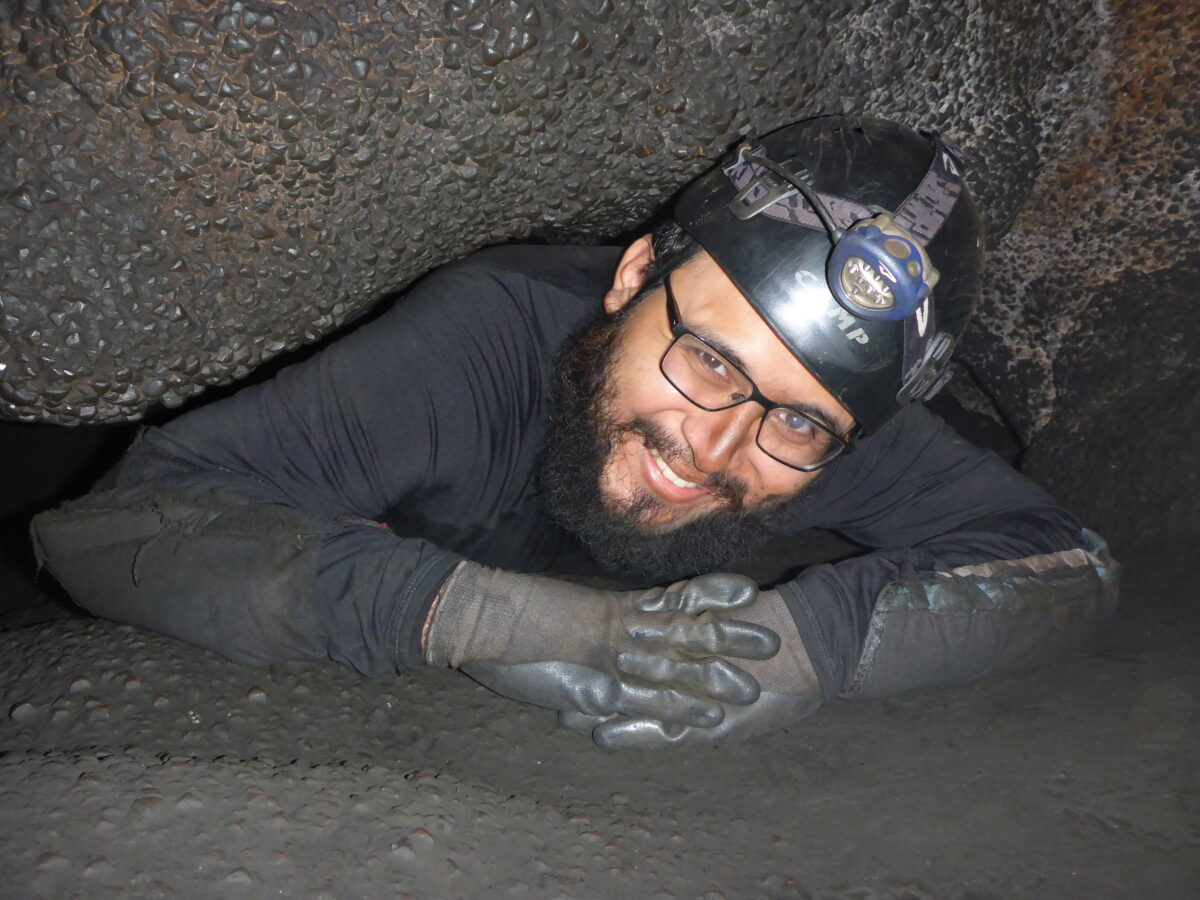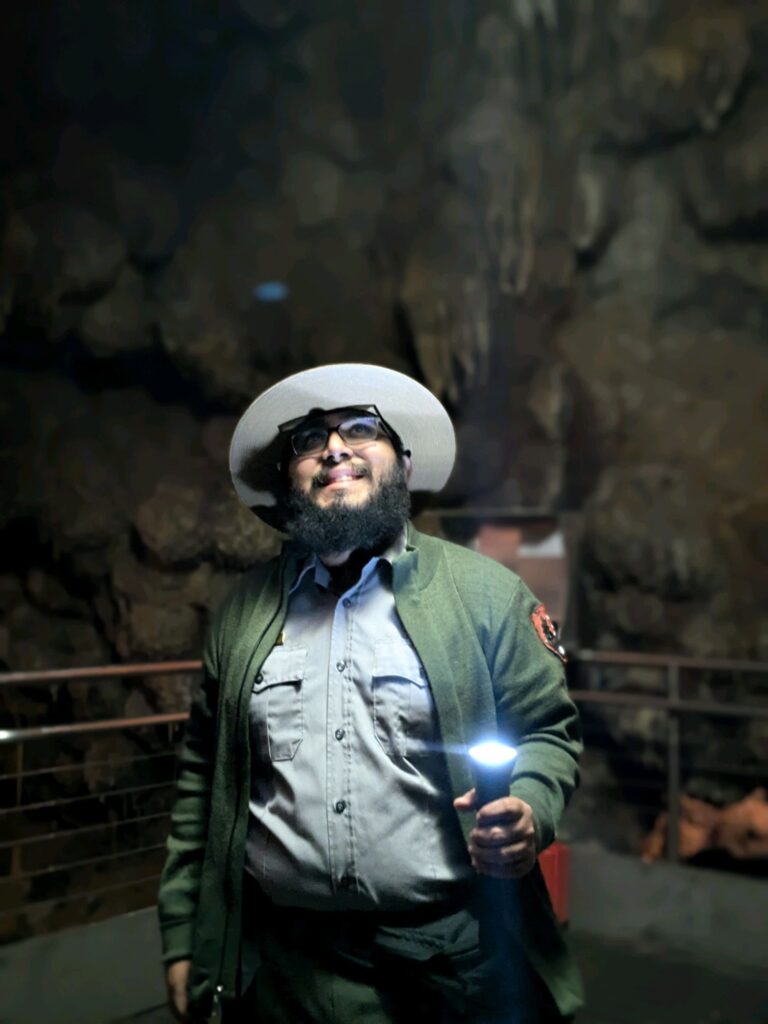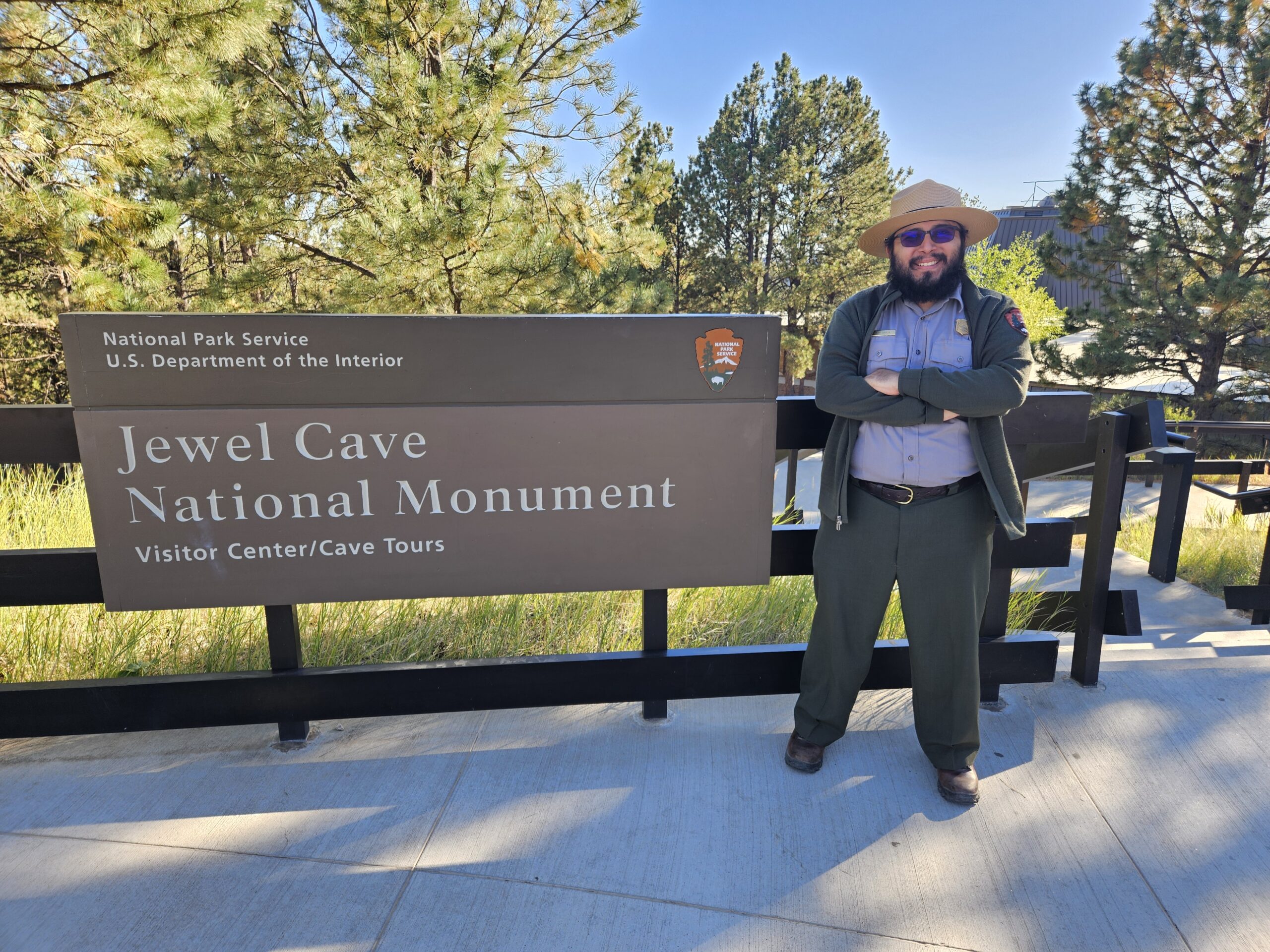Anyone trying to soothe a fussy toddler has their work cut out for them under normal circumstances. Add 379 feet of earth above your head and about 30 other tourists to the equation and you’ve got a potential disaster on your hands. But for Jeff Garcia, an interpretive park ranger at Jewel Cave National Monument in South Dakota, it’s just another day on the job. At any point into his hour and thirty minute below ground scenic tour of one of the world’s longest caves, Garcia might need to interrupt his historical and geological discourse (and steady stream of jokes) to address questions, the restroom needs of his party, or someone faced with a sudden bout of claustrophobia. The wonders of the cave make all the accompanying human foibles an afterthought for Garcia, who prior to his two summers at Jewel Cave had never been below the surface before.

Tools of the Trade:
Flashlight
Minimal fears when it comes to the dark or enclosed spaces
A love of history and geology
Convenience baggies (you don’t want to know)
Backup flashlight
Step 1: Know your audience
Garcia didn’t anticipate spending multiple summers guiding people underground in the most complete darkness he’d ever seen, but he took to it quickly. Born and raised in Montgomery County, Maryland, Garcia anticipated he’d do an internship for his historical studies master’s program at UMBC somewhere close by—the nation’s capital, for example. But when he applied to the Latino Heritage Internship Program and they asked if he’d be open to going to South Dakota, he took the plunge. “I just wanted the opportunity to work with the public and teach history,” says Garcia, who knows from experience that learning history in the classroom is not nearly as effective as learning it on-site. “When people go to museums, when they go to archives, when they go to parks, they really absorb the knowledge,” he says.

All sorts of people come to ooh and aah over the nailhead spar and dogtooth spar calcite crystals, the so-called jewels of Jewel Cave. At the beginning of his tour, Garcia assesses his group of tourists by warming them up with a history lesson and throwing in some jokes to see how they respond—that gives him a bellwether to know how the next 90 minutes will go. “You have to be mindful of the audience,” says Garcia. “I realized early on that seniors really like the dad jokes. So you kind of lean into those a bit more. When you have a lot of kids, they’re really just going to absorb it. So I’d get out the black light or a UV light onto some of the formations and it looks really cool—purple or greenish. So the kids are just going, ‘Whoa.’”
Step 2: Leave no trace
As Garcia often reminds his tour groups: In the caves, there are no cell service, food, or bathrooms, so take care of what you need before heading underground. But the persistent drip-drop sound of water—indeed the very substance that influences the formations of stalactites, stalagmites, boxwork, cave popcorn, flowstone, draperies, and a long ribbon drapery called the cave bacon—occasionally reminds visitors to heed the call of nature themselves. What then?
Garcia removes from his ever-present Ranger-issued fanny pack an innocuously named “convenience baggie.” Visitors then thank their unseeable lucky stars for the blackout conditions to ease their human needs. It then becomes their responsibility to tote their convenient baggie along until the lone trash can appears in the middle of the tour.
Step: 3 Avoid the low points
Originally when Frank and Albert Michaud filed a mining claim for “Jewel Tunnel” in 1900, they were hoping their cave was filled with minable treasure—gold or diamonds. Instead, they found calcite crystals, which Garcia quips to his groups, “Are about as strong as your fingernails and worth the same amount.” Not quite sure how to monetize their claim, the Michaud brothers invited the U.S. Forest Service to the caves, and due to the “objects of scientific interest,” in 1908 President Theodore Roosevelt declared Jewel Cave a National Monument.
At the Dugout, the lowest geographical point of the tour, Garcia reminds the visitors that, “There should be no low points emotionally.” Likewise at the Torture Room stop, the congenial guide walks the group through the naming process, which had nothing to do with torture. “It’s more of a funny story,” says Garcia, who explains that Jan and Herb Conn—the couple who mapped out more than 65 miles of the cave including the entire route of the Scenic Tour—were following the echoey sound of dripping water looking for a drink, but when they discovered the source, it was too high for them to reach.

Step 4: See yourself in history
“It wasn’t part of my family’s lifestyle to go to national parks,” says Garcia. “It wasn’t until Professor Melissa Blair’s History of Baltimore class when I went to Hampton National Historic Site in north Baltimore County that I can remember visiting something like that.”
In 2023, Garcia went to Jewel Cave through the Latino Heritage Internship Program, which not only introduces young folks to professional roles in the National Park Service, says Garcia, “but also allows visitors to see someone who is of your background and be like, ‘Hey, I can picture myself being in that position!’ Representation matters, and so I thought, ‘I could be that person for someone in the future.’”
In 2024, he was invited back to South Dakota as summer park ranger, complete with the hat and uniform. Garcia plans to graduate in May 2025, but this January he starts his new position with the National Parks Service a little closer to home—the National Mall in Washington, D.C. “I’ll still get to work with the public and hopefully have them leave me more informed than they were before or have them think a bit differently. That’s all that matters,” says Garcia.
Tags: CAHSS, Fall 2024, historical studies, History, how to, internship

